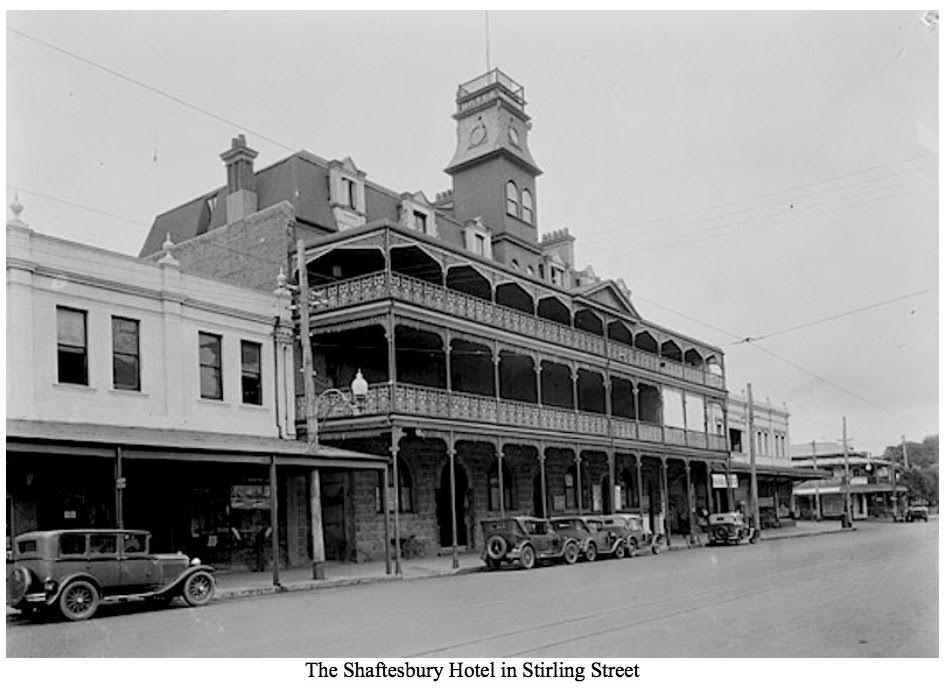One historic Perth theatre is often forgotten…
A theatre that fluctuated between live and film performances, until becoming an ice rink followed by a popular ballroom.
It was built in 1911 by Thomas Alfred Shafto (1864 – 1930), who earlier had built The Shaftesbury Hotel in Stirling Street in 1904.




Tom Shafto’s theatre went by many names:
Shaftesbury (1911-1924), Luxor (1925-1944), Tivoli (1944-1949), Perth Ice Palais (1949-1955), Canterbury Court (1955-1992)
On the fringes of the city proper, in James Street near the corner of Stirling Street, the Shaftesbury Gardens was built on the site of a woodyard. Starting life first as a Penny Arcade filled with coin-operated devices that provided entertainment and novelty.
It officially opened on Saturday 11 March 1911 as a gardens theatre with three thousand seats. Improvements for the audience included canvas seats, some raised into a dress circle. A small stage was built so that a few acts could be run in conjunction with the moving picture programme.
It began with particularly low prices, one shilling for front stalls, six pence for back stalls and threepence for the gallery.
These prices were greatly increased for a special season, such as the 6,000 ft complete film of the Johnson-Jeffries prize fight. For this short season, prices rose to 3s, 2s and 1s.
Six weeks after its March opening in 1911, the Shaftesbury Picture Gardens closed down so that a roof could be built. After reopening in June, the programmes included vaudeville support acts, but over the coming years this reversed. Known as the Shaftesbury Theatre from 1912, the entertainment from 1918 was almost exclusively vaudeville, until it closed in 1924.
The theatre owner, Tom Shafto retired into his Shaftesbury Hotel in Stirling Street and his sons Tom, Ron and Dick took over the management of the theatre.
The three boys turned the theatre round, built a proper stage with dressing rooms, stage, properties and lighting. It then became a very ornate venue in the style of an opera house.
Film screenings started again in 1925, and the theatre was renamed the Luxor Theatre.
(One noted English performer who came to Perth in the 1920s and danced in Vaudeville and Variety at the Shaftesbury-Luxor Theatre, and many other venues, was Emmie Gable, who later with Mavis Williams, went on to form a prominent School of Dancing. Emmie specialised in theatrical dancing whilst Mavis concentrated more on acrobatic dancing. They also taught tap, wire walking and trapeze.
Emmie Gable was a pioneer in the theatrical style of dance in WA. She was the first diploma holding teacher, and the Gable Williams School was one of the first big theatrical dancing schools in WA. The school remained a major influence in WA into the 1960s until it was taken over by a former pupil, Ron Jenkins. Emmie Gable died in 1992.
For a short period in 1934 the Luxor was called the Ritz, then renamed the Luxor Picture Theatre in 1936. At about this time, the Shafto boys gave it up and the theatre degenerated into a low-class vaudeville theatre featuring strip-tease acts and leg shows under the name of the Hollywood Theatre.
After this, it was a boxing and wrestling stadium for a short time, until in 1943 it was leased by Bruce Carroll, who bought the property in 1944. He was the brother of theatrical entrepreneur, Garnet Hannell Carroll, who along with partner Sir Benjamin Fuller, established the Carroll-Fuller Theatre Company Pty Ltd., in 1946.
To get rid of the stigma attached to the name of Hollywood Theatre, Mr. Carroll changed the name back to the Luxor Theatre and soon after to the Tivoli Theatre.
From then on, things took a turn for the better and the public of Perth saw the pantomime Cinderella, the all-male show The Kangaroos and Noel Coward’s record breaking comedy Present Laughter. A series of Shakespearean plays were also presented there.
After World War II Carroll’s brother brought many famous companies to Australia, including the Ballet Rambert (1947-48), the Old Vic Theatre Company with Sir Laurence (Lord) Olivier and Vivien Leigh (1948), and the Shakespeare Memorial Theatre Company (1949). The pantomime Jack and the Beanstalk and Hello 1949 were among the last shows at the Tivoli, finishing at the end of January 1949.
Tivoli Theatre property consisted of land bounded by Beaufort, James and Stirling streets, which included eight shops in the Tivoli-arcade. In addition, there were four other shops (including a wine saloon), eight flats, two suites of offices facing James-street and about 16 residential rooms.
Perth’s first ice rink was installed on the site in 1949.
Ice Palais Ltd was formed late-1948 with Carroll as its managing director and later chairman of directors. Dogged by industrial strife, the remodelling consumed most of the year, but the rink premiere was held on the evening of Tuesday December 13th 1949. It opened to the public the next day. More than 1,200 persons attended the premiere as guests of the management. The interior was ice-blue with Arctic landscape drawings on the walls. The band played the “Skater’s Waltz” from the theatre’s old stage, Carroll introduced the rink manager, Edson Richard Banks, the former proprietor of the Silver Dollar Cabaret, and then ice skating made its debut.
The city’s first Ice Ballet was staged there on April 25th 1950 with 22 local girls and 3 professional instructors. It was produced by Melbourne professional skater, Charles Armstrong, and other shows soon followed.
It also featured ice sports and other related novelty events.
The Ice Palais closed after just two seasons on Saturday February 2nd 1952. The original Ice Palais Prospectus had intended to expand business operations into large-scale freezing and refrigeration like its counterparts in the eastern states. But, in the end, the company accountants said overhead costs such as power for refrigeration had increased until it was impossible to carry on. A few months later, Bruce Carroll, the founder of Perth Ice Palais, died suddenly on a theatrical tour of New Zealand at the age of 49.
The Ice Palais building was again converted, this time for dancing. In 1955 it became Canterbury Court Ballroom.
A multi-story car-park was added above in 1969.
It was demolished in 1991 and the site became Myer Megamart in 2001.
